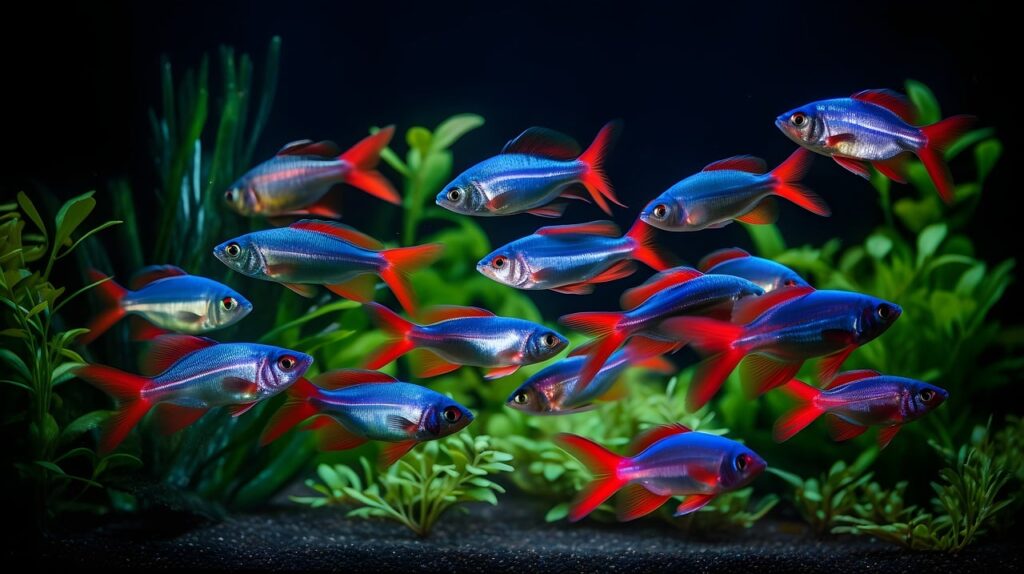
As any aquarist knows, maintaining a healthy coral ecosystem comes with its challenges, especially when it comes to managing pesky algae growth. But fear not; we’ve got you covered with the best tips and tricks to keep your reef tank thriving and your corals happy. From nutrient control to choosing the right lighting schedule, read on for expert advice on how to tackle those stubborn algae problems head-on. Let’s dive in.
Control Lighting Schedule
 The key to a healthy reef tank is to control the reef lighting schedule. Reef lights play a significant role in the growth of algae in your tank. To prevent algae overgrowth and maintain coral health, it’s essential to establish a proper lighting schedule. Moreover, you want to ensure that your reef lights are not left on for extended periods. Most reef tanks benefit from around 8-10 hours of light per day. By mimicking natural daylight cycles, you can help regulate algae growth and promote optimal conditions for your corals to thrive.
The key to a healthy reef tank is to control the reef lighting schedule. Reef lights play a significant role in the growth of algae in your tank. To prevent algae overgrowth and maintain coral health, it’s essential to establish a proper lighting schedule. Moreover, you want to ensure that your reef lights are not left on for extended periods. Most reef tanks benefit from around 8-10 hours of light per day. By mimicking natural daylight cycles, you can help regulate algae growth and promote optimal conditions for your corals to thrive.
It’s also a good idea to use a timer for your reef lights to automate the lighting schedule. This will not only make it easier for you to maintain consistency but also ensure that your corals receive the right amount of light each day without any fluctuations.
Keep the Nutrient Levels in Check
Excessive nutrients, ranging from nitrates to phosphates, can fuel algae growth, leading to unsightly blooms that can harm your coral health. Regular water testing is key to keeping these levels in check. Monitor parameters like nitrate and phosphate levels to ensure they’re in the optimal range for a healthy reef environment. Regular water changes are another effective way to control nutrient buildup in your tank. By removing old water and replacing it with fresh saltwater, you can dilute excess nutrients and help maintain a stable aquatic ecosystem. Additionally, consider adjusting feeding practices for your fish and corals to minimize nutrient input into the tank.
Add Algae-Eating Inhabitants
When it comes to keeping algae growth in check in your reef tank, adding algae-eating inhabitants can be a game-changer. These helpful creatures can help naturally control algae levels, maintaining a healthy balance in your tank ecosystem. Snails and hermit crabs are popular choices for controlling algae as they graze on surfaces where algae tend to grow. They can efficiently consume various types of nuisance algae, preventing them from taking over your coral reefs. Additionally, fish like tangs and blennies also feed on certain types of algae, providing an added layer of defense against excessive growth. By introducing these algae-eating inhabitants into your reef tank, you not only create a more diverse and balanced marine environment but also reduce the need for manual removal or chemical treatments.
Know How to Enhance the Filtration
An efficient filtration system helps remove excess nutrients and waste that can often result in fast algae growth. Many reef experts, including Richard Ross of Aquashella, suggest fellow reefers use a combination of mechanical, chemical, and biological filtration methods for optimal results. Mechanical filtration involves removing debris and particles from the water through materials like filter floss or sponges. Regularly cleaning or replacing these filter media will prevent them from becoming clogged and ineffective. Additionally, using protein skimmers can help eliminate organic compounds before they break down into nutrients that fuel algae growth.
Biological filtration, on the flip side, relies on beneficial bacteria to break down various degrees of ammonia and nitrites into less harmful nitrates. Providing a diverse range of live rock and substrate in your tank creates ample surface area for these bacteria to thrive. Supplementing with products containing beneficial bacterial strains can also aid in maintaining water quality for coral health and preventing algae outbreaks. Remember that each reef tank is unique, so it may take some time to find the perfect combination of strategies that work best for you. By staying proactive and dedicated to proper maintenance practices, you can enjoy a thriving reef environment while keeping algae problems at bay.
